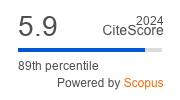Article | Open Access
The New Visual Testimonial: Narrative, Authenticity, and Subjectivity in Emerging Commercial Photographic Practice
| Views: | 6060 | | | Downloads: | 4318 |
Abstract: By studying the cultural and aesthetic impact of increasingly pervasive digital technologies and mass amateurization, this paper examines the ramifications of the networked information economy on professional photographic practice and considers the concomitant implications for the photographic classroom. Using the framework of convergence culture as per the writings of Yochai Benkler, Henry Jenkins, Mark Deuze, and Axel Bruns, the impact of accessible and instantaneous image creation and dispersal are explored. Given the rise of consumer engagement in brand co-creation on social media platforms, we can observe massive changes to professional practice in areas such as aesthetics, and the erosion of previous sustainable business models. Indeed, as traditional notions of “expertise” shift from technological prowess to narrative and disseminative abilities, the effects on commercial practice and photographic education need to be addressed. This paper argues that there are three emerging priorities for commercial image use: narrative ability, authenticity, and subjectivity and suggests initial steps in their pedagogical application. By acknowledging these transformations, this paper explores the idea that students need to harness technique, social media influence, adaptability, subjectivity, and storytelling power in order to better serve emerging image-based needs in commercial spaces.
Keywords: brand co-creation; commercial photography; convergent culture; Instagram; marketing; post-secondary education; social media; user generated content
Published:
© Heather Morton. This is an open access article distributed under the terms of the Creative Commons Attribution 4.0 license (http://creativecommons.org/licenses/by/4.0), which permits any use, distribution, and reproduction of the work without further permission provided the original author(s) and source are credited.


